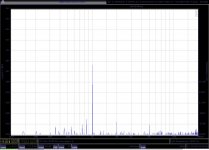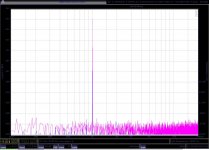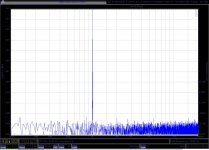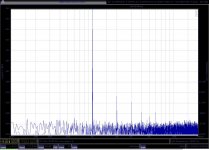Hi Allen, 6DJ8 might have suitable technical specs but they sound hard and gritty to me no matter when they have been in a circuit... so no go<<
Then, to be blunt, you are not using them right. Check out this review of our RTP3D preamp, using (only) 12 x 6DJ8/6922:
http://www.sixmoons.com/audioreviews/vacuumstate/preamp.html
He, and no other RTP client reports gritty sound.
>>Now what about those RESISTORS??<<
Which resistors? Not a topicI've brought up.
Regards, Allen
_-_-
Allen, dunno, I place zero credence in reviews... otoh you may have figured something out. That has not been my experience with this tube. Others may have other experiences and my experience the sound of this toobe differently (and apparently do).
Resistors - not aimed at you - the rest of them! We were discussing resistors and the thread went elsewhere suddenly without notice.
We were discussing resistors and the thread went elsewhere suddenly without notice.
_-_-
Resistors - not aimed at you - the rest of them!
_-_-
Allen, dunno, I place zero credence in reviews...
Wise, especially where 6Moons is concerned. Nonetheless, I have heard (and built) plenty of 6DJ8/ECC88 designs that had no trace of "grittiness," including Allen's. Most bad experiences with that tube are either due to VHF oscillation (most common) or relabeled remote cutoff triodes sold as 6DJ8. The transconductance and low capacitance can be a deadly combination uless handled carefully.
BTW, I'm glad to see that discussion of no-holds-barred preamplification has finally settled on the right devices to use...
BearAllen, dunno, I place zero credence in reviews... otoh you may have figured something out. That has not been my experience with this tube. Others may have other experiences and my experience the sound of this toobe differently (and apparently do).
Resistors - not aimed at you - the rest of them!We were discussing resistors and the thread went elsewhere suddenly without notice.
_-_-
The guys were not say 12ax7 sound bad but that certain precautions needed to be taken when using it .
I know we are getting off topic, but out of curiosity: Which topology of phono stage this happened to be ?
GK7
People spend a lot of time with valve types and circuit topologies but what is also of worthy mention is what circuits are used to power up the individual valves , both high voltage (plate supply) and low voltage (heater supply) as typical valve circuits have very poor power supply rejection and they have a big influence on sound.
So asking John Curl about his circuit is almost pointless without knowing everything else.
GK7
typical valve circuits have very poor power supply rejection and they have a big influence on sound.
Have to disagree. As with solid state circuits, there's a wide, wide range of PSR. Taking two good phono preamps, for example, you've got Allen's cascode transistor/ECC88 that has exquisite power supply sensitivity and MUST be used with a top-quality, low noise regulator, and there's mine, which has very high PSR and can be powered off very simple regulators. They're both tube-based, both perform well, and span the alpha-omega of power supply rejection.
I'll guess that John was playing with a Marantz/ARC sort of topology with moderate PSR. It would be interesting to see what he'd do with tubes today.
I have heard (and built) plenty of 6DJ8/ECC88 designs that had no trace of "grittiness," including Allen's. Most bad experiences with that tube are either due to VHF oscillation (most common) or relabeled remote cutoff triodes sold as 6DJ8<<
Exactly. Also running them at low current in a "12AX7ish" circuit just doesn't sound good.
>>BTW, I'm glad to see that discussion of no-holds-barred preamplification has finally settled on the right devices to use...
Again, exactly!
Regards, Allen
GK7
People spend a lot of time with valve types and circuit topologies but what is also of worthy mention is what circuits are used to power up the individual valves.
You are correct here, and that's why my schematics all INSIST on the use of my current sourced shunt regulator to work and sound as they should.
Regards, Allen
I would like to make the comment that vacuum tubes, while very good, are not what I design with. The 12AX7 has been very successful over the decades, BUT it is limited, especially in current drive, which can be VERY important in some situations.
Let us go on about solid state solutions, and leave the tubes to another thread.
Let us go on about solid state solutions, and leave the tubes to another thread.
Let us go on about solid state solutions
Boooooo! Booooooooooo!
Silicon circuits, even with the latest generation of OPamps can be made to sound extremely well. When it comes to measurements it is hard to make a tube stage that has as low distortion, noise and very high bandwidth. Using discrete circuits with relatively high voltage it gets quite thin for tubes. I can see no cheap and easy compromises provided the circuit is competent and build with good parts. I whould say that it is cheaper and easiers to make a good sounding tube circuit. I know what i am talking about because i had a lot of tube amps at home with aspiration to be "The Best". I listened at length to them and i measured them as good as i could. Except a portion of harmless second harmonic and a different noise profile i could not find any magical properties in them. For me it is just another technological option. A lot what a tube can do sonically can be mimicked with single ended Fet circuit and i got particular good in building buffers that add whatever distortion and noise i like. Actually i think a lot what makes a tube sound good is adding some ( small ) extremely attractive distortion to the music. But now i am back where i should not be here.
Joachim, I do not think that any IC op amps do as well as a well designed piece of tube equipment, OR good discrete solid state electronics.
As far as IC's are concerned, today I tried your suggestion of National OP AMP as replacement for the AD797, which is very good, but too expensive, in my opinion, compared to its competition. It works fine, sounds good, and I did not measure anything higher than 3'rd harmonic. Perhaps this IS progress in IC's, I hope so.
My problem with vacuum tubes is the related coupling to and from it, that means lots of caps, and or transformers. It is these components that I worry most about.
As far as IC's are concerned, today I tried your suggestion of National OP AMP as replacement for the AD797, which is very good, but too expensive, in my opinion, compared to its competition. It works fine, sounds good, and I did not measure anything higher than 3'rd harmonic. Perhaps this IS progress in IC's, I hope so.
My problem with vacuum tubes is the related coupling to and from it, that means lots of caps, and or transformers. It is these components that I worry most about.
Allan Wright and i listened in my place to his top Tube Stage compared to one of my OPamp based preamp. Ask him. I do discrete too when i try to make the best posible but this little preamp is a lot of fun. The MC input stage in that Pramp is an INA build from two LME49990 and one ADA4627 per channel. A conventional feedback structure with the LME49990 brings not the best sound out of it. I tryed virtually everything, series feedback, shunt feedback, differential etc. and the INA topology works by far the best soundwise. I can not measure distortion in that circuit at cruising level. It is below the noise.
Here come the measurements from an early prototype that used 2 x AD797 and one OPA827. The new version is better. I can reduce noise by 6dB with paralleling of input opamps but then it gets expensive again so discrete whould be more economical.
Attachments
- Status
- Not open for further replies.
- Home
- Member Areas
- The Lounge
- John Curl's Blowtorch preamplifier part II



